August 15
Today's destination:
Including the local trains at either end of today's route, we'll have five trains to catch today - wish us luck!
The first train, a local commuter, takes us to Asahikawa Station.
Now on train #2 on the way back to Sapporo to catch the next train. (Gerri indicating #2 - not "peace mon")
Now out of Sapporo bound back to Hakodate. After 8 more years of construction, the bullet train will reach all the way to Sapporo, but today we're on a slower one for our 3rd train.
Our bullet train arrives in Hakodate for the next leg, number 4, soon blasting underwater through the tunnel between Hokkaido and Honshu Islands.
Our final train is coming to a stop to load us on - after more than 7 hours it's been a long day - this one will take us from the bullet train station to the center of Aomori. Tim's smile is coming back as the Sun goes lower.
Yeah, your luck-wishing worked, we made all the trains. Actually, we weren't too concerned as the extremely good Japanese train system is incredibly dependable.
August 16
Breakfast at the JAL hotel - it's a smorgasbord of healthy food.
The tour of Aomori begins - we head just up the street to what we're calling "The Giant Dorito".
In the Dorito's lobby - "Ayeeeee, don't call muh building the Dorito, or I will cut you!".
We've headed up to the observation deck to see what the city looks like from above.
A view from far above is shown in a poster in the building - yah, it's a Dorito fer sure.
Family photo above, family reunion below?
We'll be spending the next several hours in the area right around the bridge - there's a lot to see here, more than we expected really.
Some neat installations on the observation deck:
"The Nebuta Museum Wa Rasse is a city-owned museum near Aomori Station displaying a revolving exhibit of four Nebuta floats from the most recent Aomori Nebuta Matsuri summer festival, alongside media related to the festival. The museum opened in January 2011.
The concept for Nebuta Museum Wa Rasse was part of the "Basic Plan for the Rejuvenation of the Aomori Station area" in 2004. The plan was devised to keep tourism and businesses present in central Aomori after the 2010 opening of the Tōhoku Shinkansen (bullet train) and Shin-Aomori Station that would supplant the Tōhoku Main Line and Aomori Station leading to a potential shift in commuter traffic away from the city's central district. The plan called for a public cultural facility near Aomori Station that focused on the Aomori Nebuta Matsuri summer festival that takes place annually on the waterfront of Aomori Bay.
The building's exterior of red, ribbon-like, vertical steel beams was designed to evoke the visual sensation of light passing through Aomori's old-growth beech forests, as found in Shirakami-Sanchi, while controlling the amount of natural lighting that penetrated to the museum's interior."
The concept for Nebuta Museum Wa Rasse was part of the "Basic Plan for the Rejuvenation of the Aomori Station area" in 2004. The plan was devised to keep tourism and businesses present in central Aomori after the 2010 opening of the Tōhoku Shinkansen (bullet train) and Shin-Aomori Station that would supplant the Tōhoku Main Line and Aomori Station leading to a potential shift in commuter traffic away from the city's central district. The plan called for a public cultural facility near Aomori Station that focused on the Aomori Nebuta Matsuri summer festival that takes place annually on the waterfront of Aomori Bay.
The building's exterior of red, ribbon-like, vertical steel beams was designed to evoke the visual sensation of light passing through Aomori's old-growth beech forests, as found in Shirakami-Sanchi, while controlling the amount of natural lighting that penetrated to the museum's interior."
Photos can't really capture the incredible 3-dimensional nature of the floats like the live eye can.
Drums carried along on the parade route, with 6 marching drummers drumming:
Several exhibits show how the internal structure is done - visitors are invited to even touch these items.
The heavy float is balanced on one large axle/wheel system, and pulled along by float tender people.
Nearby is a place producing ciders and hard ciders. Apples are a big commodity in the region. Samples are had by a self-serve machine.
Here's the cidery, the bridge, and the float museum, along with a couple super-sized tourists, in one shot - also, if you look through our legs, it's our next stop on the Aomori tour today:
Before the train tunnel connected Honshu with Hokkaido, trains rolled across the strait aboard a ferry:
We go aboard for an extensive self-guided tour...
The captain shouts "iceberg, dead ahead", the helmswoman "make sure you get my good side".
The Dorito, the Bridge, and the Float Museum as seen from the ferry's decks.
Tim found this spot especially evocative (that's two big e-words huh?) - his Dad's time in the Navy was spent aboard ship in a radio room very similar to this.
Now checking out the train track deck - the passenger trains are brought aboard much like cars and trucks onto ferries, but of course into a yard of tracks - at the other end, at the destination pier, the train is relinked and it continues on its way.
In the ferry's engine room, that's a lot of big honkin diesel engines:
After disembarking from the ferry, we find a couple neat little micro SUV's:
Dinner at a dirt-cheap chain Japanese diner - not exactly gourmet, but it hit the 'spot'.
...and then onto the one and only:
They also had the self-service machine - using a purchase tracking card, you dispense what you want by the ml.









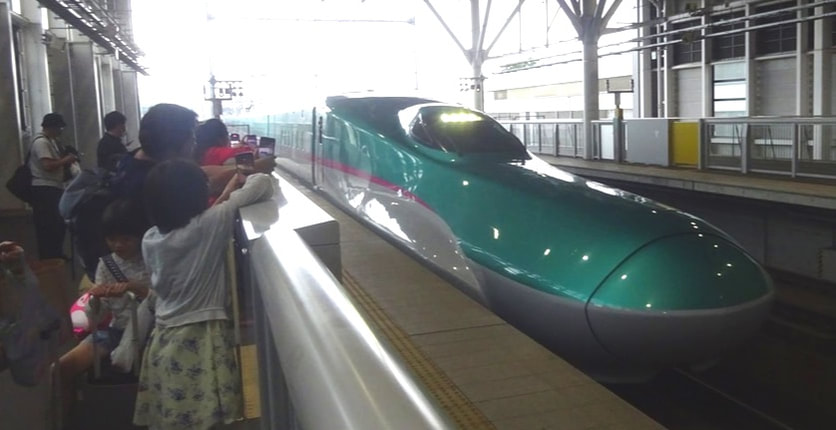



























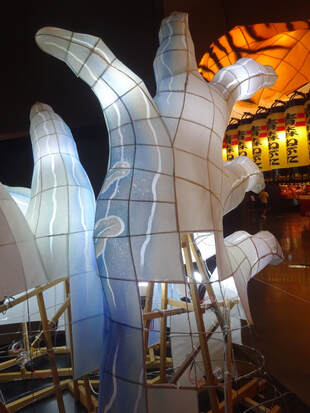

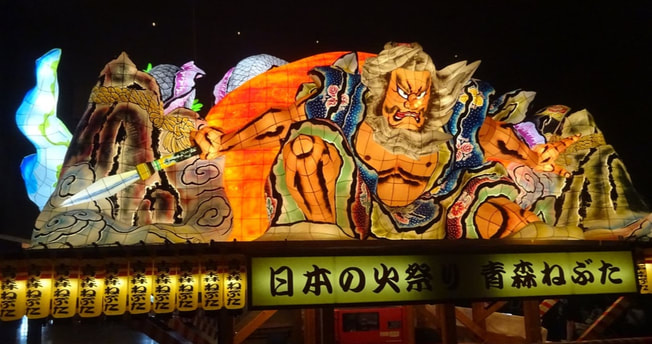
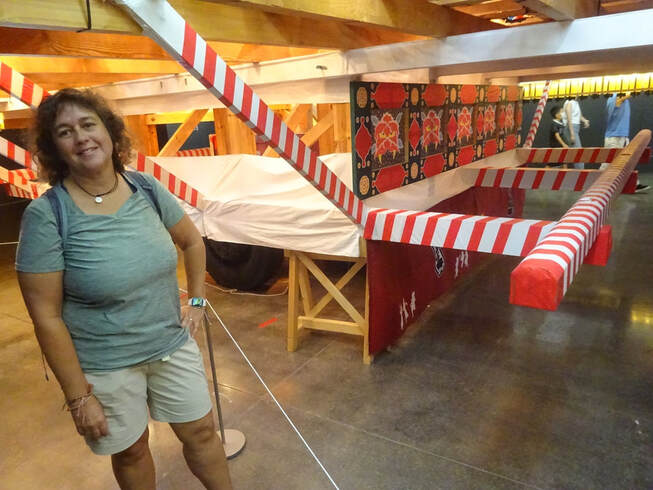




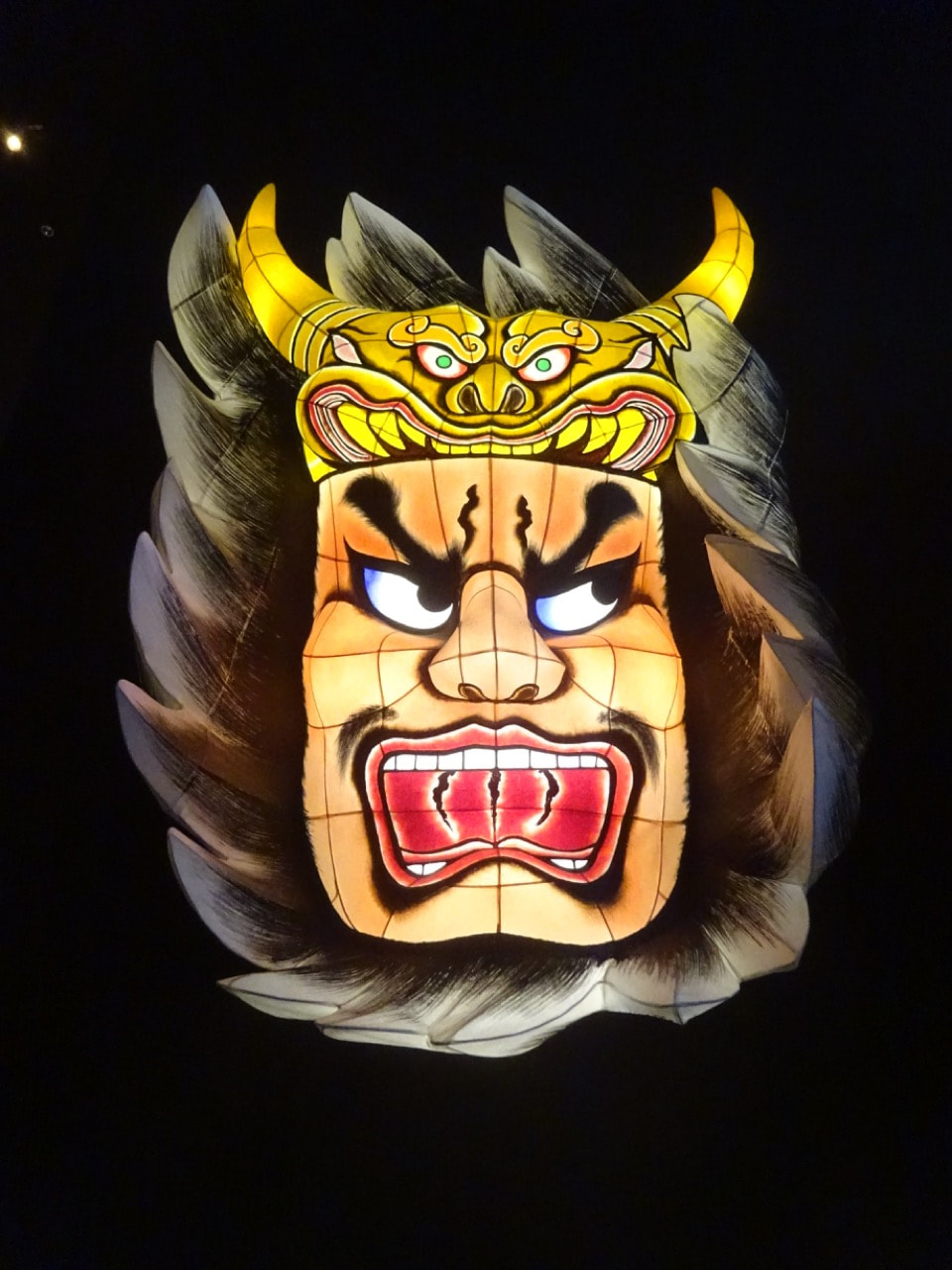








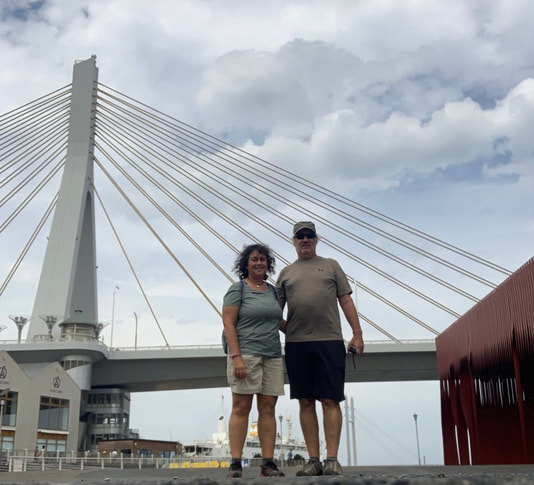










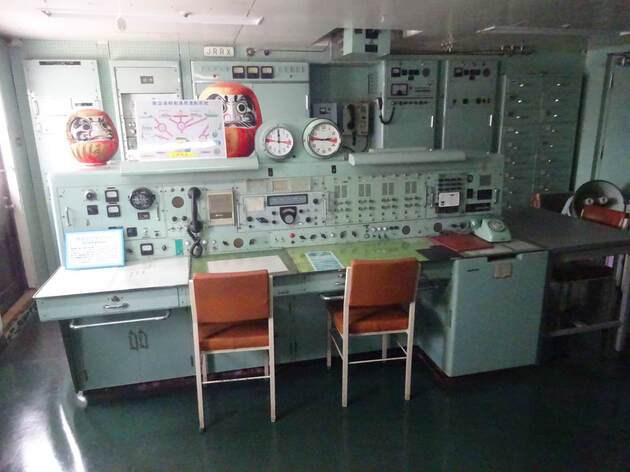








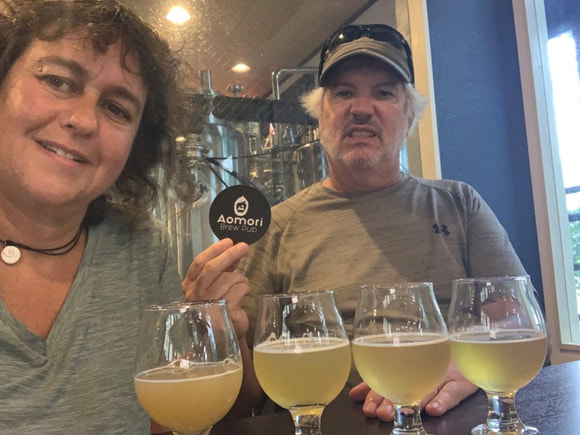
 RSS Feed
RSS Feed
